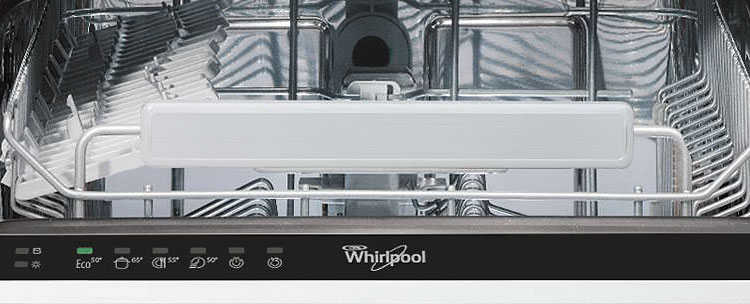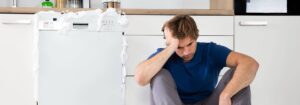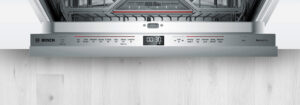Understanding your Whirlpool dishwasher error codes
A Whirlpool dishwasher isn’t like other models that you’ll encounter. Every system is different, and they all possess a variation of flashing lights or a sequence which indicates a problem. Understanding what they all mean can be pretty vital for making sure that you respond correctly to an issue and get it resolved. Here at Just Fixed, we want you to be able to get the most from your system, and so we’re going to be looking into the error codes you might experience.

Fault Code F1
The first code that we’re going to look at is Whirlpool fault code F1. This error can also reveal itself to you via a single flash of the system. However, regardless of how you see the message, the meaning is the same. It represents a problem with the temperature sensor of your dishwasher, which often leads to difficulties in regulating the heat of the water being used to clean dishes. The message appears when the sensors inside the machine detect that it’s operating outside of the given temperature range. In some cases, you can heat the interior and then try again, but in other instances the heating element is faulty. If you’re unsure, consult with a professional.
Fault Codes F2 and F3
Moving on, we’re going to take a look at Whirlpool Fault Codes F2 and F3, both of which connect to the water systems in a dishwasher and highlight issues with them. Two flashes, or error code F2, means that a water leak has been detected somewhere in the system. You can’t quickly fix this yourself, so you’ll need to get us involved! The fault code F3 is indicative of an issue with the heating system which creates hot water to clean dishes. You need to check the heating element first of all and see if there’s an immediate error. If you can not identify an error for yourself, then it is within your interest to contact a professional.
Four Flashes, Fault F4
Four flashes denote the fourth fault code, and it is an indicator that the dishwasher is not draining of water correctly. This problem is one you can investigate for yourself, and you can do so by making sure that there are no blockages or debris surrounding the areas where the water drains.
Fault F5
Fault F5 occurs when the spray arms are blocked and have subsequently malfunctioned. Thankfully, as a problem, this isn’t the end of the world, because you can easily remove them and examine the issue for yourself! You can even wash them and make sure that they’re as clean as possible, and then put them back into your machine and try again.
Six Flashes
In some situations, you’re going to get six flashes coming up on your Whirlpool machine. This occurrence denotes a fault code known as F6. F6 indicates to us that the dishwasher isn’t detecting water coming into the system, regardless of whether or not the water inlet valve is open. Naturally, this can be quite a frustrating occurrence, and the first thing you’ll need to do is to check the water supply and make sure it’s connected properly. You would also be wise to check if there are any problems with regards to kinks in the system or blockages.
F7 – Nearing The End?
Thankfully, there aren’t many more Whirlpool fault codes that you’ll have to deal with, so we’re going to push through and cover them all. Fault code F7 is what you’ll see when there is a fault with the flow meter. This problem is common in dishwashers, and you can fix it with a replacement piece. However, make sure you check to identify that the problem isn’t just down to water supply before you do so.
Fault Code F8
The next Whirlpool fault code which we have on the list is fault code F8. This set of flashes indicates a problem with the turbidity of the water, which means that it’s too dirty. Typically, this isn’t an issue because nearly all dishwashers have a built-in system that cleans the water, but in some instances, you’ll need to inspect it for yourself to confirm that there’s no significant blockage or that things aren’t too dirty.
F9 – Water Overload
Whirlpool Fault Code F9 is considered to be one of the more irritating codes because it shows you that your system is struggling with too much water. You can figure this one out by looking to see if there’s a problem inside the water inlet valve – is it jammed?
F0 – Double Digit Flashing
We’ve moved into our first double-digit flashing. This set of flashes is a sensor failure, but you won’t see it unless you’re an engineer because of how the system works.
FA – Out of Numbers
FA is 11 flashes, and we’ve most past the concept of numbers now. Fault Code F11 means that there’s just high levels of water turbidity, so go back to F8 for the solution to that, or contact a professional.
FB and FC – the End of the Road
Now we’ve reached FB and FC. We’re honestly at the end of the road. FB is a problem with the motorised diverter valve, and FC is a failure in the water hardness failure. Like most of these issues, you can contact us here at Just Fixed, and we’ll put it right for you!




